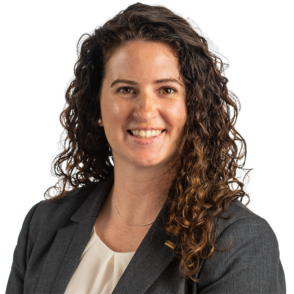Macroeconomic trends, namely inflation and rising interest rates, are having a profound effect on the Property & Casualty (P&C) market as we head into the second half of 2022. Inflation impacts everything—from rapidly changing property values to challenges with mid-year reinsurance renewals. These are truly generational inflationary pressures that most professionals within the industry have never personally experienced.
Even with rising prices, carriers’ behavior in the P&C market remains stable—for now. Effective July 21, the Atlantic Hurricane Season has been mild, so carrier margins have performed relatively well in the first six months of the year. However, every region of the country is unique, resulting in policies that reflect specific exposures creating differences—therefore some buyers will see elements of moderation while others will experience increases despite the macro trends. Worker’s Compensation for example seems to be in more of a moderation phase while CAT-exposed properties and Cyber policies increasing across the board with companies seeing a rising number of claims and more risk in the Cyber space.
That is important to know because according to a recently published report from the Wholesale and Specialty Insurance Association (WSIA), H122 surplus lines policy counts are up 9.4% while corresponding premiums are up in excess of 32 percent year-over-year, confirming that business is flowing into the specialty marketplace as admitted carriers grapple with both traditional and emerging perils as well as inflation. As you will see later in this report, surplus lines premiums, as reported from stamping offices, increased significantly from a year ago.
A global reinsurance broker released a study July 1 indicating carriers are looking to reduce volatility in this inflationary period, making it even more of a challenge for owners of CAT-exposed properties to find the coverage they need. We also expect more clients to be faced with legal proceedings, as courts are opening again after two years of mandated and volunteer pauses of onsite hearings. Many of these courts are racing to catch up to their dockets and as a result, more carriers are requiring legal defense services than at any point since 2019.
Keeping our fingers crossed about the “storm” season
A few months remain in this year’s Atlantic Hurricane Season and the “mild” results so far could shift at any time. Some named storms remain strong even over land for days at a time, such as 2021’s Hurricane Ida which stretched from the Gulf Coast to the Northeast. It caused an estimated $64 billion in damage, bringing massive rain and flooding to Philadelphia, New York City, and surrounding areas for several days and 1,000 of miles from where it made landfall in Louisiana.
One of the biggest factors for carriers is what is in the path of potential hurricane destruction as storms that cause more damage in terms of dollars will alter the market. The amount of financial damage and claims from named storms experienced in any season will have a dramatic impact on the direction of rates and capacity in the coming months. The National Oceanic and Atmospheric Administration predicted above normal hurricane related storms for 2022 earlier in the year and an above normal season is still possible.
Extreme heat is adding to the challenges around convective storms
Extreme heat experienced by many parts of the country in mid-July is another example of added stress on the P&C market. The Washington Post indicated on July 19 that more than 200 million Americans will experience temperatures in the 90s or above, with heat alerts issued in 28 states.
Wildfires continue to be an issue, spurred by high temperatures, drought, and demographic living patterns, to name a few. Such extreme heat may become more common and is also impacting Europe, Asia, and parts of Africa.
Demographic changes drive CAT losses
The demographics and living patterns of Americans are changing. In the insurance world this references the fact that more people are living in more places and that a few years ago were considered “remote.” Think of sparsely populated areas in Alabama, Mississippi and Louisiana along the Gulf Coast, the high mountains of Colorado, Utah and many western states and far northern communities near the Canadian border. However, between hurricanes, wind, wildfires, drought, convective storms, flooding and more, potential catastrophic weather events can happen everywhere. Every region in the U.S. is subject to CAT storms, and those living in remote areas may be at a higher risk. No one is immune.
Rumors of carrier evacuations in Florida abound
Florida Gov. Ron DeSantis signed property insurance legislation in late May that creates a $2 billion reinsurance fund and rewrites rules on coverage denials and attorney fees, in a move to stabilize rising costs and insurer losses. While a net positive for the industry, it is a short-term solution to a long-term problem. This move was partially as a response to the rumor that as many as 25 carriers could be exiting the P&C market in Florida altogether. We expect carrier turbulence in Florida to continue as multiple industry sources have been referenced confirming rating agency, Demotech, will downgrade 15 Carriers by the end of July.
Property valuation remains critical
We have written this before, but the cost of rebuilds has risen significantly as building material prices for lumber, steel and more soared starting in 2020. Brokers and agents should work directly with the experienced professionals from Burns & Wilcox to ensure valuation is accurate for all P&C coverage. Burns & Wilcox will consult our third-party technology and data partners to ensure proper valuations are provided. Valuations need to be accurately and consistently updated or an organization’s risk profile can be altered—and not in a good way.
RATE
Premiums continue their upward trend in the P&C space. Surplus lines premiums as reported from stamping offices exceeded $31 billion during the first six months of 2022 in the U.S. That represented a 32 percent increase over the same time period in 2021. Additionally, transactions for policy accounts rose 9.4 percent from January – June 2022.
As of this writing Q2 earnings season is in full swing for insurance industry partners. It is evident from the early reports that carriers will see continued pricing increases in commercial and personal lines. One month ago, insurance data provider Advisen indicated that the market was nearing rate adequacy after roughly three steady years of rate hikes. Although many experts in the industry believe this rate adequacy balance, inflation could be the wildcard that drives further industry loss deterioration.
The bottom line is that rates continue to steadily rise as they have been for several years. We do not see that changing in the near-term.
CAPACITY
Capacity remains consistent and mostly plentiful with the exception of a few clients looking to secure global market capacity. While capacity is generally available, it is by in large available at the higher rates carriers are demanding including CAT exposed Property. Clients will continue to make their own decisions on whether they are willing to pay for available capacity at those prices, however we believe capacity from specific carriers will continue to evolve as they make business decisions based on profitability and other factors.
TERMS & CONDITIONS (T&C)
Terms and conditions have become more restrictive the last few years and at a high level that continues today. The available terms and conditions with many policies have become aligned with societal factors. As a result, they are made available in a “guarded” way especially where greater exposures exist. Uniquely worded terms and conditions should no longer be considered unique, but now somewhat commonplace to any account.
It is clear that terms and conditions for property policies will be viewed and monitored carefully by underwriters, and many go/no-go decisions are predicated on the information and data provided in the submission or renewal. All data in a submission must be adequate and accurate, which can lead to more favorable terms. If the information provided is merely less than adequate, a more restrictive coinsurance clause among other conditions may trigger that favors the carriers.
NEW MARKET ENTRANTS
While Q2 did not experience the continued wave of new market entrants that have been common the last several years, there were signs of evolution as many entrants expanded and cemented their position in the marketplace. Special attention surrounds what we have previously labeled “fronting” or “hybrid” carriers as the demand grows from MGAs seeking capacity and reinsurers wanting a seat at the table.
Insurance industry asset manager and research firm Conning recently reported premium growth of 45 percent among the top 17 fronting/hybrid carriers in P&C for a total of $9 billion in 2021. The company indicated “a hard market for most lines of business is growing harder, yet capacity to support MGAs is often easier to secure than in previous years due to the efforts of fronting companies to open up global reinsurance markets.” Burns & Wilcox recently entered into agreements with this new breed of carriers on several domestic and international programs.
Finally, we covered the decision made by Vantage in mid-2021 to acquire a surplus lines insurer. The reinsurer built out its platform from this acquisition through a hiring spree and investing in modern IT systems to support profitable underwriting. However, despite the lack of legacy balance sheet concerns and a fresh platform, Vantage CEO Greg Hendrick in an interview earlier this month stated, “Verdict awards for damages are getting bigger, as corporations and insurers in general fall out of favor with the public. We’re seeing that in a meaningful way in North America.”
No truer words can be said as both financial and social inflation will continue to press the edges of verdicts, awards and other insurer expenses. This confirms for all of us the importance of disciplined and thorough underwriting by the industry at large.
Contributor: Paul G. Smith, Corporate Senior Vice President, Carrier Relations, H.W. Kaufman Group
Q2 2022 OVERVIEW & Q3 FORECAST BY LOB
Our industry leading subject matter experts dissected the marketplace and provided insights on the
Burns & Wilcox P&C Market Outlook: Q2 2022 webinar, hosted July 14, 2022.
As we head into the second half of 2022, Cyber Liability, Coastal Properties and Commercial Properties are among the P&C coverage areas that continue to experience a hard market, marked by limited capacity and rising rates. The competition for available capacity remains steep, placing a heavy burden on the quality of submissions and the guidance of brokers and agents.
Claims in each of these three areas have skyrocketed in recent years as the impact of increased ransomware and professional hacking efforts, changing weather patterns and fallout from COVID-19 is felt. Despite a challenging environment, brokers and agents can position their clients for access to coverage through a variety of strategies, and utilize resources provided by Burns & Wilcox to build their collective portfolio.
Cyber, Coastal Property and Commercial Property will generally remain hard in the next six to 18 months, although stabilization in non-cyber lines is likely. The good news is that by consulting with the experts from Burns & Wilcox, you can get access to capacity that would otherwise be difficult to find. This will help brokers and agents to help clients become more informed about their options.
Below, our experts provide further guidance, delving deeper into specific areas with advice and outlook.
Click here to view the complete webinar.
PERSONAL INSURANCE (US)
Options for homeowners in the coastal regions of the U.S. continue to shrink as fewer carriers are offering coverage. Years of unprofitability, challenging legal climates and rising reinsurance costs are adding to the strain on declining capacity for the surplus lines market.
The cost of reinsurance has increased significantly in 2022 making it difficult for many insurance companies to purchase the necessary limits to continue operating in coastal states. Many property carriers in CAT-exposed areas are faced with choosing to cut back on their appetite or shut down, either voluntarily or otherwise. Those that remain open for business are forced to pass along significant pricing increases to pay for the reinsurance and produce an acceptable loss ratio.
Another challenge for the wider property market is insuring to proper value on their risk locations. Carriers are challenged by insurance to value ratios as recent CAT claims across the country have shown building limits to be severely lacking compared to the rising cost to rebuild. Elevated inflationary pressures add to the challenge of keeping up with accurately determining property values.
As a result, carriers are taking few chances. Above average rate increases for many Property lines, especially for coastal properties, continue. Underwriting and the general appetite for terms and conditions will be more restrictive.
Brokers and agents who work with partners like Burns & Wilcox to get accurate valuations, and advise their clients to use replacement cost estimators, as well as schedule annual inspections before renewals will serve their clients well, giving them a better chance of finding coverage in this challenging market.
Looking ahead to 2023:
- Attention will be placed on accurate replacement values
- Property capacity will remain tight as carriers address profitability, rising reinsurance costs and financial rating actions
- Property pricing will continue to trend higher and insuring terms and underwriting guidelines will remain on the conservative side
For more information, click here to view our Personal Insurance video highlight.
Contributor: Anella Niewenhous, Associate Vice President, Regional Practice Group Leader, Personal Insurance, Burns & Wilcox, Morehead City, North Carolina
COMMERCIAL INSURANCE (US)
Several factors are driving Commercial Property market challenges. Hurricanes in the southeast, wildfires in certain areas of the West Coast, and wind/hailstorms in Texas, Oklahoma and Kansas previously comprised the majority of commercial CAT claims. As we know that has changed. Hundreds of billions of losses were reported in 2021 from 18 storms in regions that exceeded the aforementioned list. Now commercial clients in states like Ohio and Indiana are forced to have large wind/hail deductibles because of changing weather patterns.
One of the most effective ways to deal with challenges in the Commercial Property sector is to make your coverage submission stand out. This is necessary because in this competitive market, the volume of submissions is overwhelming. Many brokers are getting 400-600 Property submissions each month. Property owners are fighting for every advantage they can get just to qualify for coverage.
Features of a high-quality submission include:
- A strong cover letter
- Statement of values
- Occupancy details
- 5-year loss summary
- Valuation specifics
- Photos including aerial and street-level views from Google Earth and Google Maps
- Characteristics of the building, such as number of stories, whether there is a sprinkler system, number of entrances and more.
Looking ahead to 2023:
- The focus on maximizing losses will continue as capacity remains tight
- On a related note, if prices get too high, clients may prefer to collaborate with their representatives to determine the amount of exposure that is appropriate
- More carriers will offer and encourage wind deductible buybacks and wind only policies
The Casualty marketplace is approaching equilibrium as it relates to Carriers beginning to get a handle on what had been a prolonged and soft market with broad terms and conditions. Some of the tools at Carriers’ disposal within this broad category are outlined as follows by the major lines of business (LOB):
- Primary General Liability: Carriers are requiring detailed information surrounding the risk profile to ensure they not only rate the account accurately, but fully understand the insureds operations and potential risks. It is not uncommon to see amendatory endorsements or other policy language changes that specifically address real or potential exposures through sublimits, exclusions or other changes designed to ring fence the exposure. Perhaps more so than ever, insureds and agents/brokers alike need to be sure a standard GL policy dovetails with other specialty LOBs to ensure there are no gaps in coverage.
- Auto Liability: Arguably the most volatile LOB within the broad Casualty category, Carriers are carefully and methodically underwriting this line. Elsewhere we have discussed social inflation, sympathetic juries and other loss drivers that are resulting in auto loss trends that are skyrocketing, irrespective of fleet make-up or size. Until we see this trend change, Auto liability limits and corresponding Umbrella liability limits should be considered carefully as the past may not be a valid indicator of future losses. Your Burns & Wilcox professional is equipped to secure required limits via primary, buffer, and excess or umbrella as needed.
- Umbrella/Excess: It’s important to bear in mind that many courts are behind in their respective dockets resulting in an a-typical trend of most insureds liability loss forecast over the last few years due to the pandemic. This dynamic is short lived and will no doubt catch-up at some point creating a spike in claim severity. This coupled with both financial and social inflation in our estimation will create a new normal resulting in Insureds needing to carefully evaluate their risk appetite and determine what Umbrella/Excess limit is best. While individual Carriers are generally not putting out the same capacity as they once may have, we layer programs to meet the need and limit requirements. We have numerous markets, facilities and other tools at our disposal to meet client’s needs.
It’s important to underscore the importance of accessing the right market based on the class of your Casualty risk. For instance, the Construction marketplace vs. the Healthcare marketplace are entirely different. We fully understand these nuances and will access the best Casualty markets based on the industry and related underling risk characteristics as outlined with these two simple examples.
Contributor: Paul G. Smith, Corporate Senior Vice President, Carrier Relations, H.W. Kaufman Group
PROFESSIONAL INSURANCE (US)
Rate increases of up to 20 percent on average per quarter have been coming in the Cyber industry since the second quarter of 2020. Pre-COVID, Cyber represented an area of growth with significant coverage available for just about all clients. However, the proliferation in ransomware incidents in the last two years is significant. According to a March 2022 Harvard Business Review article, the average ransom payment rose 82 percent from 2020 to 2021. Halfway through 2021, the number of ransomware attacks had risen more than 150 percent over the entirety of 2020.
For nearly two and a half years, carriers have been attempting to right-size their books, stripping Cyber policies of terms and conditions with increased retentions and premium. More recently, inflationary pressures have further stressed Cyber markets as the costs for just about every insured service—legal, forensic science, corporate public relations, even hardware and software—rose.
Meanwhile a spate of new state laws and federal/state regulations add further responsibilities on employers. While the intent of these laws is good, and will benefit consumers, the additional steps needed to comply, such as employee training and reporting, come with additional financial and operational costs. Such mandates also create new potential exposures.
Innovative technologies, while serving the greater good, also open businesses to added risk that previously did not exist. The increased use of biometric data, face scans, voice recordings and more are exposing corporate clients, further contributing to the market tightness.
These factors are forcing Cyber insurance holders to improve their risk profile just to qualify for coverage. Proving their commitment to combating cyber threats internally include:
- Instituting 2-factor authentication strategies
- Ensuring daily, offsite data backup
- Identifying and fixing potential endpoint access
- Limiting and protecting the company from personal device usage
- Forming frequent employee training courses on cyber trends
Long-form submission renewals are generally required for coverage. Burns & Wilcox recommends that clients conduct a cyber scan of their organization’s data systems shortly before renewal. This is one example of how being transparent with IT-related data can support liability profile, improving chances for affordable coverage.
Looking ahead to 2023:
Cyber Liability
- Little to no changes in capacity tightness and double-digit rate increases.
- Right sizing will continue with carriers dropping sub limits.
- Little new capacity from carriers.
- D&O, EPL and Fiduciary markets will also remain tight albeit with single digit percentage premium increases.
- Long-term COVID impact will weigh heavily on EPLs with more courts catching up on cases brought against employers related to such issues working from home, returning to work, mandates and more.
Professional Liability
- New capacity will be available from selected carriers despite a modest increase in rates.
- Premium decreases in some excess layers for towers.
- Quoting excess for all lines should be an area of growth as this is an area where carriers are looking to grow and provide capital, providing brokers and agents with new business opportunities.
For more information, click here to view our Professional Liability video highlight.
Contributor: Ryan Ascenzo, Senior Broker, Professional Liability, Burns & Wilcox Brokerage, New York, New York
TRANSPORTATION INSURANCE (US)
For those of us that live in the Transportation arena, it seems we continually are barraged with what’s “new”. For all that is new, it seems that not much has changed lately. We continue to see a rate environment which is pushing north but at much more of an inconsistent path than in the past. Carriers while still concerned about future claims seem to have stayed the course on risk acceptability standards. Proprietary trucking programs continue to enter the insurance space. Most tend to focus on certain geographic areas or classes of business, and all done at rates that are lower than those presented by more tenured carriers. Typically, they enter the market strongly aiming for quick and significant growth but often causing long term chaos after exiting the market once results that weren’t expected emerge.
More recent and potentially impactful news came out of the California Assembly Bill 5 which now requires workers to pass a 3-part test to determine if they can be considered an independent contractor. If they are unable to pass the “stress” test, then they would be considered an employee which would entitle them to benefits. Until now, an estimated 70,000 truckers have been classified as independent contractors and assessing whether they are or are not under the new guidelines could take months and months to determine. This will essentially put these truckers out of business and further put a squeeze on an already tight truck and supply chain market.
In the last quarter we discussed the continuation of nuclear verdicts and their impact on the industry. During covid we saw a reduction in these large-scale verdicts only because many courts were closed. As courts have reopened and started to clear their dockets, we may potentially witness a rash of new nuclear verdicts again imperil transportation carrier results and lead to another round of significant rate increases.
More impactful, will be that we may see some carriers throwing up their hands and ultimately withdraw from the market. Given the small number of experienced transportation insurance carriers left, the industry needs market stability and can’t deal with further carrier retrenchment. As an industry we must continue to fight for our insureds, but we must also continue to push for legislation that provides a fair playing field for claimants, carriers, and insureds. Continuing to kick the can down the road will only further exacerbate an industry that is clearly at risk.
Contributor: Gene’ Cain, Vice President, National Practice Group Leader, Transportation, Burns & Wilcox, Scottsdale, AZ
ENVIRONMENTAL INSURANCE (US)
The Energy sector is in a financially healthier place in 2022. While it remains in a hard market with capacity challenges, global oil production and consumption has climbed to pre-pandemic levels, and rig activity is up significantly. The price of a barrel of crude oil is consistently above $100 as of June 2022, roughly 50 percent higher than prices 12 months ago. Higher demand with an uptick in travel for Canadians and Americans yet a lower supply as a result of the war in Ukraine are two of the main reasons for higher prices.
Beyond geopolitical factors, investments in environmental social governance (ESG) programs and technologies supporting them are growing as well. This is a result of governmental regulations and mandates, corporate desires and general consumer will. Energy companies are investing in technologies designed to capture emissions and improve efficiencies in an effort to reach net zero carbon emissions in the years ahead. Brokers and agents are regularly working with clients to address ESG planning, which includes finding policies that support such efforts as landfill strategies, thermal recovery, lead reduction and more.
Through Burns & Wilcox, we have binding authority in-house, access to an exclusive Oil & Gas Consultants Program, and a broad appetite for renewable energy risks. The professionals at Burns & Wilcox have the experience and industry connections in the U.S. to identify the best solutions, and secure options for any insurance need. This includes the ability to package General Liability, Pollution, Professional Liability, Companion Auto, Companion Workers Comp, Property, Inland Marine, Excess and Cyber policies.
Renewables represent another area of growth for the Energy industry. Many energy companies in the U.S. are investing in more renewable innovations such as windmills and solar technologies, the latter more possible because of advancements in storage technologies and solar batteries. The insurance industry is adding investments in these areas too, with more retailers and brokers establishing renewable division of experts. Renewable energy will comprise an even larger share of the market with more investments.
As the Energy industry continues to evolve with global and economic trends, building and maintaining strong relationships with carriers is critical for brokers and agents to ensure access to available coverage for clients. Quality submissions that answer all required questions while providing any additional profile details is advantageous. Creativity in identifying available solutions, selling based on coverage and value rather than cost, and partnering with multiple carriers positions brokers and agents favorably no matter how oil and natural gas prices fluctuate.
Contributor: Alex Krcmarik, Senior Broker, Environmental, Burns & Wilcox, Denver, Colorado
PERSONAL INSURANCE (CANADA)
In Q2, storm activity affected parts of the country and contributed to continued constraints on residential insurance markets appetites and rates. Losses sustained have led and will continue to lead to individuals seeking solutions from the hard to place insurance space. To effectively manage risk, insurers considering these types of distressed needs continue to emphasize risk modeling and enforce coverage restrictions. This trend is expected to continue as we navigate wildfire season. Overall, we have found most success placing coverage for clients who are actively mitigating their homes against weather related exposures.
In recent warmer months, we have also seen a submission influx of residential construction projects and short-term rental properties. It is important to navigate these instances early to appropriately assess available policy terms and to limit gaps in coverage. The Burns & Wilcox Canada Personal Insurance team remains dedicated to developing creative solutions and expanding capabilities to address these unique exposures.
Contributor: Michelle Allemang, Manager, Western Canada, Personal Lines, Burns & Wilcox, Toronto, Ontario
PROPERTY & CASUALTY (CANADA)
COVID restrictions have been completely lifted throughout Canada which means the hospitality industry (and others) is returning to normal. We can expect revenues for these businesses and ancillary companies to begin to climb along with their exposures to a pre-COVID period. There still seems to be a staffing shortage as experienced throughout the past six months.
Rating in most Property & Casualty classes have stabilized, and our underwriting teams are seeing that consistent renewal premium increases across the board are no longer anticipated. Competition still seems to have capacity restrictions depending on the class and our teams are receiving requests for subscription policies versus needs for writing the entire risk.
We are seeing trends of insureds having limited coverage in certain classes. As weather events are becoming increasingly common and COVID restrictions have lifted, we are recommending clients ensure their property and liability limits are adequate for their needs before a claim occurs. Even as inflation and interest rates are trending up, clients would rather pay more premium and be effectively covered as opposed to paying for large damages out-of-pocket.
Contributor: Patricia Sheridan, Director, Ontario Commercial Insurance, Burns & Wilcox, Toronto, Ontario
PROFESSIONAL LIABILITY (CANADA)
Throughout Q2, Cyber continues to be the largest challenge. Markets are continuing to change strategies, and many are increasing the minimum revenue requirement before they will even consider, in addition to imposing restrictions on some coverages. Insureds seeking a combined Technology E&O and Cyber form will face even more stringent underwriting review as we envision coverage may not be available on a combined form.
Capacity continues to be a hinderance in general, and as a result, we’re seeing a large increase in submissions as brokers are forced to find alternative terms and/or additional capacity. Markets continue to tighten underwriting appetites, increase rates and reduce the amount of cover available. It is expected that these trends will continue well into the balance of 2022.
Contributors: Danion Beckford, Senior Underwriter, Professional Liability, Burns & Wilcox, Toronto, Ontario
Abby Egeh, Senior Underwriter, Professional Liability, Burns & Wilcox, Vancouver, British Columbia
TRANSPORTATION INSURANCE (CANADA)
The Excess Umbrella market remained extremely firm as rates continued to climb with no new capacity coming on line. We are hearing however that markets are now considering offering the capacity but at much higher prices than in previous years. Brokers continue to struggle to find the liability coverage insureds require. Continued reluctance of markets to add capacity to this segment likely is linked to no material change in jury awards for bodily injury claims and the continued rise in litigation financing which is encouraging plaintiff to pursue increased cases to be heard by trial that may have otherwise settled sooner, resulting in continued uncertainty. But with lower accident frequency rates during Covid and sustained higher prices, maybe the availability of umbrella coverage may become a little more available than the last 18 months
Motor Truck Cargo markets remained relatively stable in Q2 2022. Rates remained firm, but availability is not constrained. We continue to see more new businesses open as the pandemic recedes adding some capacity to the Trucking market. Although we would expect some economic challenges from higher interest rates, the impact of expected rate increases has not had any material impact on the volume of shipments to date. This could change however, as central banks double their efforts to fight inflation.
Burns & Wilcox Canada continues to deliver exceptional service to our retail partners.
Contributor: John McGlynn, Director, Transportation, Burns & Wilcox, Toronto, Ontario
ENVIRONMENTAL INSURANCE (CANADA)
Q2 2022 saw further rate erosion with renewals expected to yield 0-10 percent. We are not anticipating any hardening for Q3 2022.
There is continued market appetite restriction around bulk haulers, dry cleaners, mining and O&G. Further into the year, we continue to see underwriter caution around site development and aging underground storage tanks (USTs). Additionally, we expect a continuation of the trend experienced in Q4 2021—competitors increasingly pulling out of classes where they were once aggressive—through the coming months.
Burns & Wilcox Canada is leveraging its relationships and technical expertise, to continue assisting clients in navigating this challenging market. These relationships will be key, particularly during a ongoing turbulent specialty marketplace.
In Q2 we saw noteworthy client caution, with promising prospects moving very slowly or stalling; we attribute this phenomenon to the long-term impact of the pandemic vis-à-vis client liquidity. This said, and as Q2 draws to a close, we are beginning to see some traction and hence continue to track.
Contributor: Karim Jaroudi, Manager, Environmental, Burns & Wilcox, Toronto, Ontario
Q2 2022 OVERIVEW & Q3 FORECAST (LONDON MARKET)
Our Q2 overview of the London market remains largely unchanged from Q1: Lloyd’s syndicates and London carriers continue to exercise restraint in regards to their US catastrophe exposures and continue to drive rates and improve quality of portfolios via risk selection criteria and tighter terms and conditions.
This remains most evident in Florida and Louisiana but all hurricane exposed states continue to be impacted by this discipline to some degree. While legislation was passed in Q2 to help stabilize the Florida homeowners market, it is too early to tell whether the impact to capacity and pricing in the short to medium term will be as Florida legislators intended.
Many syndicates and London markets (as well as domestic carriers) will have renewed their catastrophe reinsurance protections in Q2 and this will undoubtedly further shape their catastrophe exposure strategy for the remainder of 2022 and 2023. With insurers now generally paying higher costs for reinsurance cover and retaining more exposure we should expect to see a continued conservative approach for the remainder of the year at least.
The US hurricane season has the potential to dominate Q3 and the number of named storms and major hurricanes is forecast to be above average for the 2022 season (albeit less than 2021). The actual catastrophe loss come the end of the season will have a significant bearing on full-year underwriting results and the ongoing assessment by individual syndicates and companies regarding the level of future US catastrophe footprint they are willing to have. We think it is safe to say that more changes in appetite should be expected.
Contributor: Laura Bates, Corporate Senior Vice President, H.W. Kaufman Group, and London Market Practice Leader, Burns & Wilcox, Detroit/Farmington Hills, Michigan
CONCLUSION / SUMMARY
While rate adequacy and rate leveling appears to be occurring now and may stay with us over the next several months, of course various emerging concerns such as inflation will have a say in this. We simply don’t know what the future will hold with inflation or the impact in courts reopening and handling more open cases.
Further, the final story of the 2022 Atlantic Hurricane Season remains unwritten even with an encouraging start with no major storms. If wildfires and hurricanes increase the second half of this year, all bets are off on what the impact will be on both rates and terms and conditions.
One of the most effective ways to combat these threats in the P&C space is to accurately value your property and quantify your exposure. Burns & Wilcox has the sources to help properly determine present-day values and exposures as our teams continue to expand the breadth and scope of our subject matter experts through hiring the “best of the best” across the industry.
Combined with an unparalleled and robust technology platform, and strong, long-term relationships with industry insiders, Burns & Wilcox helps brokers and agents make informed decisions based on data, proven trends and collective industry expertise. Given inflationary pressures and growing concern over convective storms and other emerging perils, the guidance is needed now more than ever.
Contributor: Paul G. Smith, Corporate Senior Vice President, Carrier Relations, H.W. Kaufman Group
Disclaimer: The above information has been prepared solely for the purpose of sharing general information regarding insurance and business practice management issues. These are just our opinions and are not intended to constitute legal advice or a determination on issues of coverage.














